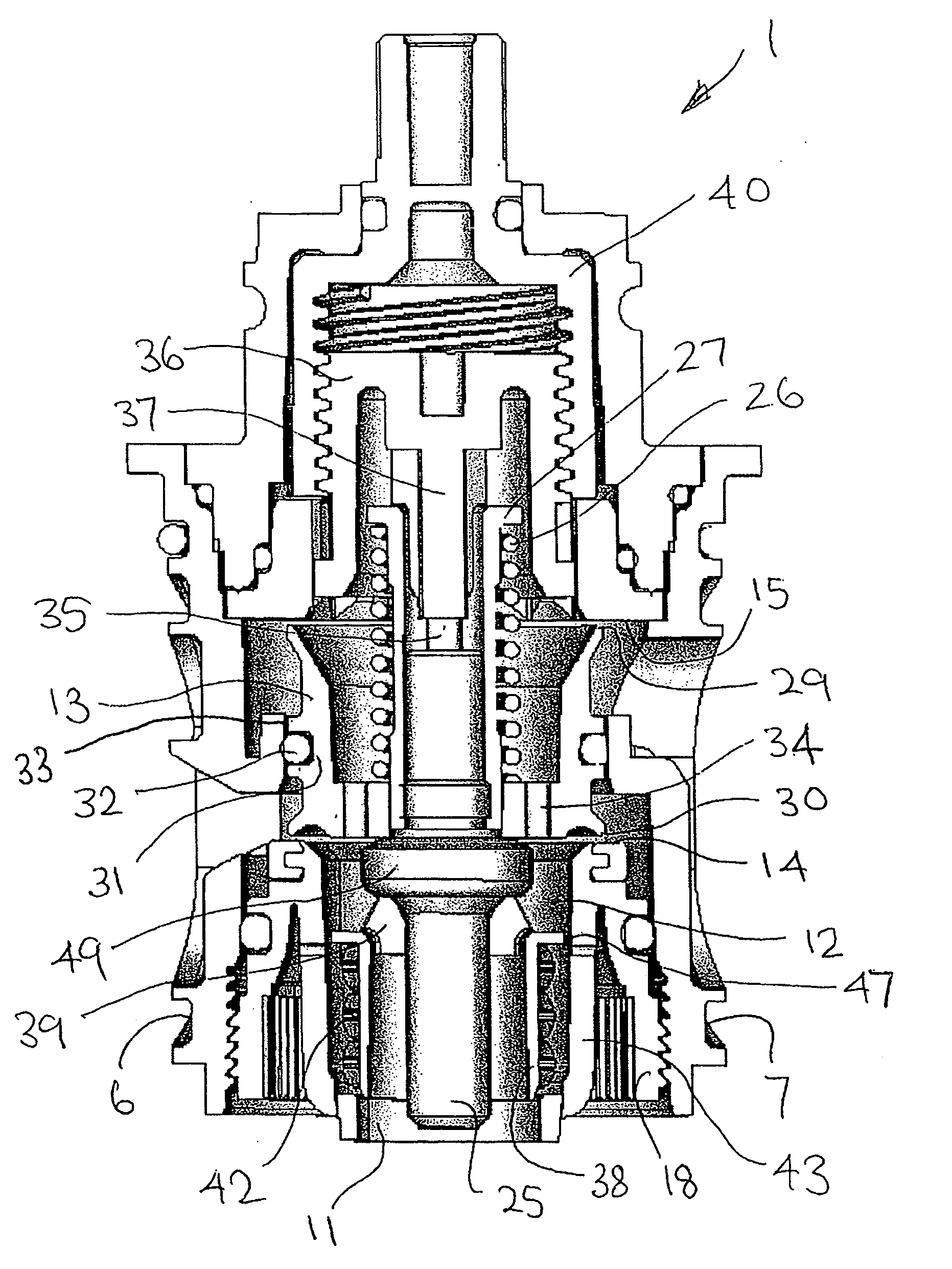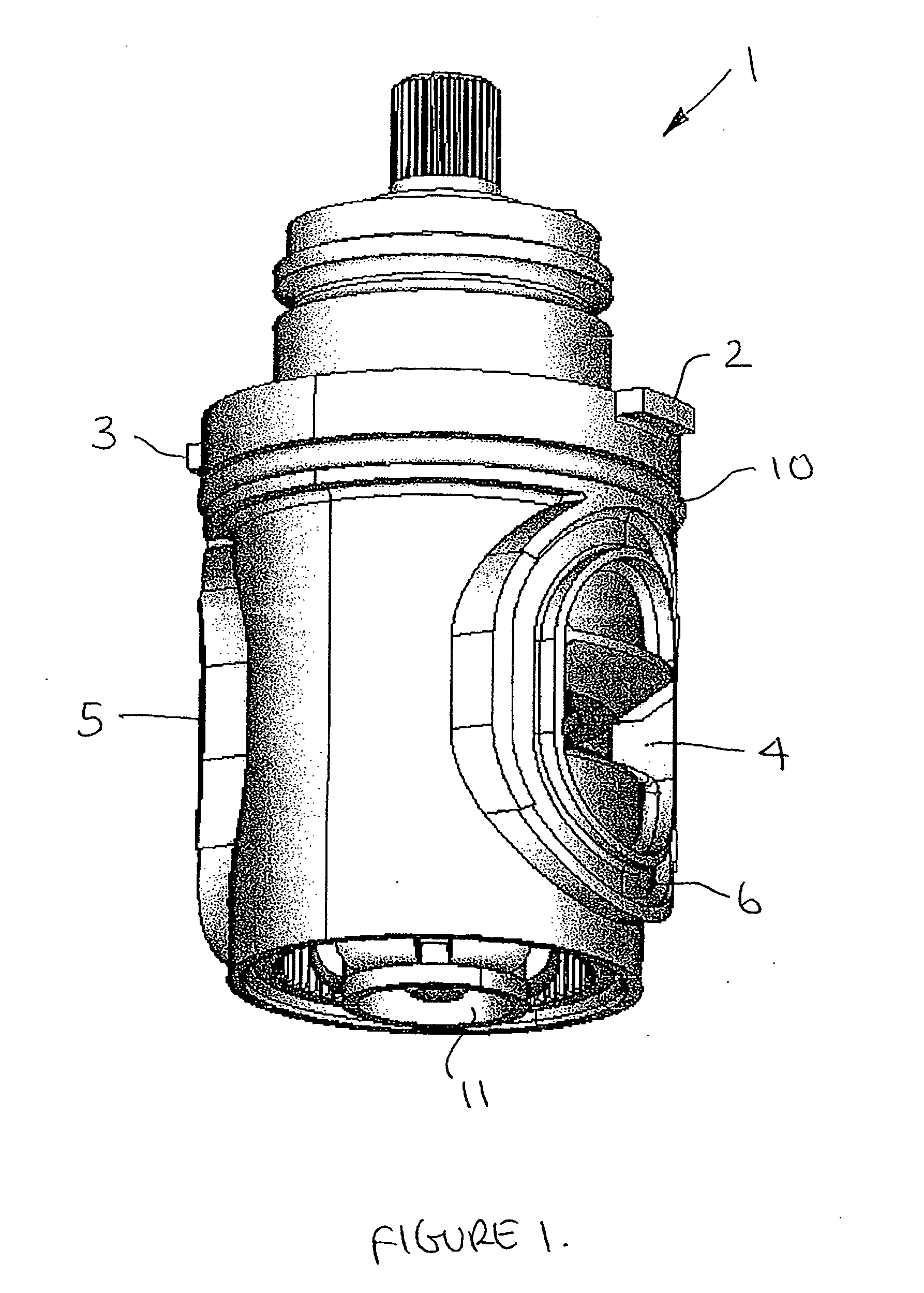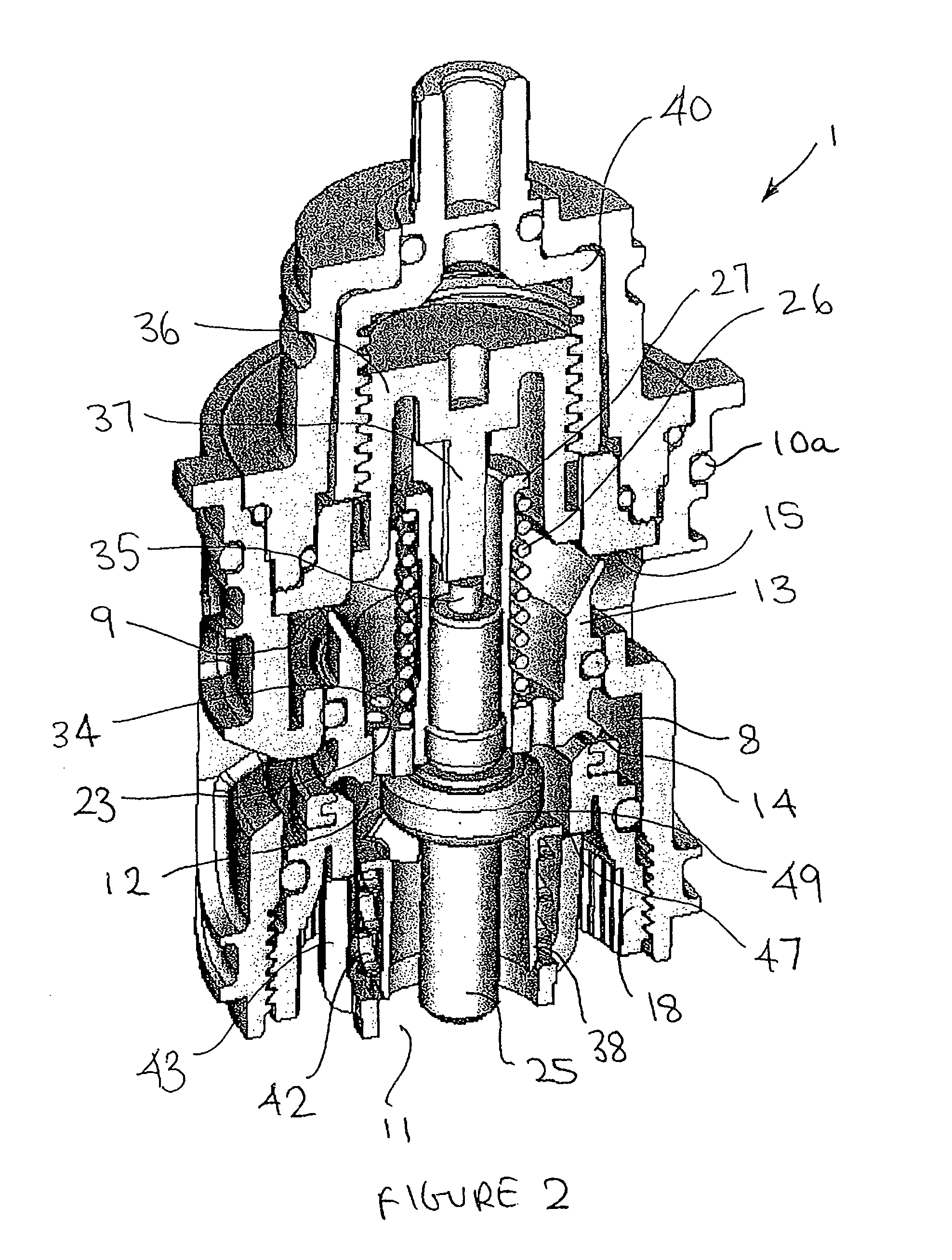Thermostatic mixing valves
a technology of mixing valves and valves, applied in multiple way valves, slide valves, instruments, etc., can solve the problems of increased manufacturing costs, vibration of valve shuttles generating noise, misalignment of valve shuttles, etc., and achieve enhanced response, enhanced response, and increased total flow rate through valves
- Summary
- Abstract
- Description
- Claims
- Application Information
AI Technical Summary
Benefits of technology
Problems solved by technology
Method used
Image
Examples
Embodiment Construction
[0037] With reference to FIGS. 1 to 4, there is shown a thermostatic cartridge unit 1 of a mixing valve for a water supply installation such as a shower, bath or basin. The cartridge unit 1 is removably mounted in a body (not shown) of the mixing valve and has an annular groove 10 for an O-ring seal 10a (FIG. 2) to seal the cartridge unit 1 in the valve body.
[0038] The cartridge unit 1 has a pair of lugs 2,3 engageable with a pair of diametrically opposed notches in the valve body to prevent rotation of the cartridge unit 1 in the valve body and position the cartridge unit 1 to align inlets on the valve body for connection to supplies of hot and cold water respectively with a hot water inlet 4 and a cold water inlet 5 on the cartridge unit 1.
[0039] The inlets 4,5 are sealed relative to the opposed inlets in the valve body by O-rings (not shown) received in annular grooves 6,7 in the outer surface of cartridge unit 1 around the inlets 4,5. At a lower end of the cartridge unit 1 is ...
PUM
 Login to View More
Login to View More Abstract
Description
Claims
Application Information
 Login to View More
Login to View More - R&D
- Intellectual Property
- Life Sciences
- Materials
- Tech Scout
- Unparalleled Data Quality
- Higher Quality Content
- 60% Fewer Hallucinations
Browse by: Latest US Patents, China's latest patents, Technical Efficacy Thesaurus, Application Domain, Technology Topic, Popular Technical Reports.
© 2025 PatSnap. All rights reserved.Legal|Privacy policy|Modern Slavery Act Transparency Statement|Sitemap|About US| Contact US: help@patsnap.com



